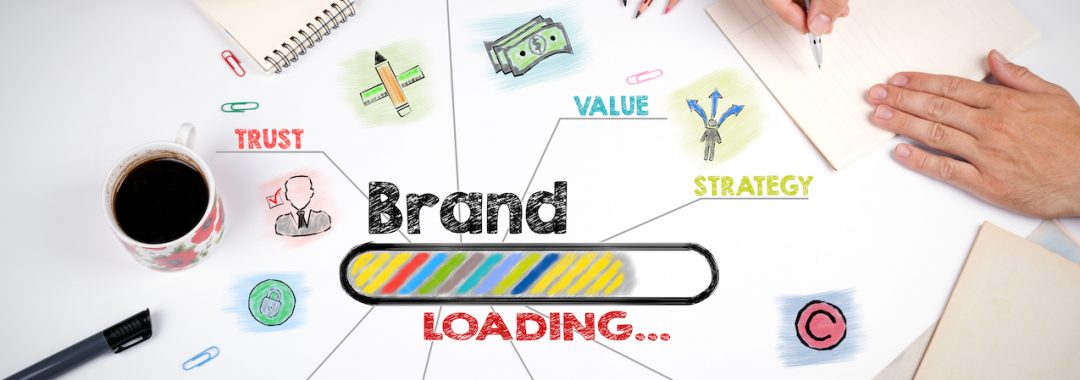There was a time when branding used to simply refer to your logo, letter head and maybe a bit of decoration on your company vehicles. But branding has evolved into something very much more complex and multi-faceted that should lie at the heart of every business.
As a small business with limited resources, it’s tempting to think that branding is a luxury, or something unnecessary, or perhaps an airy-fairy concept that doesn’t add value. But creating a great brand can distinguish you from your competitors, increase your customer loyalty, and uplift your price.
What constitutes a brand?
Your overall brand is the sum of your several parts:
- Your brand look, the design that still applies from logo onwards
- Your brand voice, the messages that the company gives out
- Your market position; the relationships that your company forms with its customers.
- It also includes your brand values.
Put all these together, and you have the three P’s of branding:
- Your proposition
- Your personality
- Your purpose.
Your brand can grow to have a worth of its own, adding value to your company and an uplift to your pricing, as well as making sales (and repeat sales) easier and faster. A strong brand can sometimes be worth a great deal more than the rest of the company. Your goods and services become brand led, rather than sales led, with people buying, and placing value on the proposition, simply because of the brand name.
It is worth remembering that Coke was continually beaten by Pepsi in blind tastings, yet outsold Pepsi by billions, by better branding. Think of a pair of Marks and Spencers jeans versus a pair of Levi 501’s, or a high street shoe against a Jimmy Choo, Macs v PCs, and you will start to get the idea of what branding can do, particularly in increasing profitability. A strong brand will reduce customer’s buying objections, be socially attractive to associate with, attract staff, customers and stakeholders alike and buy loyalty from them all.
Consider the following in evolving your brand
- The vision– the purpose, the “Why”, at the heart of your existence as a company. Think Disney’s desire to make people happy or Anita Roddick’s desire to build the Body Shop as an ethical, natural cosmetic and beauty products company. Peripheral values and bits of the vision may change over the years, as indeed may operating procedures, but the vision and core value at the very heart of a business should never alter. This vision should be able to be distilled into just a few powerful words.
- Objectives of your brand– where you are aiming to be. B.A. sets a clear example: “To be the undisputed leader in world travel”. Ask yourself where you are aiming to be. Aim high but keep it realistic and appropriate for your business.
- Then you need to carry out a brand audit. No picture is complete without examining the subject’s relationship to its environment, so it’s vital to understand how your brand is situated and, more importantly, perceived by others, both against your competitors and in the market place. Are you happy with it, and where can you see other’s weaknesses that you could build on within your own brand?
- Your brand essence is composed of the attributes of your brand, and your values. If the vision is the why, your values are the how. You need to convey how you do business with your customers, including how you value your people, and what is really important to you.
- Only then do we come to brand resourcing, the logo, company colours, etc., which is the translation and capturing of your words, values and ambitions into icons, symbols and layouts for print and mobile, signage, uniforms, vehicles, packaging and so on.
- Finally, there should be continual monitoring of your brand identity, especially through client feedback and reaction. Without this, it is all too easy for your brand to become diluted, tired, or simply fail to adjust to environmental or market changes. To make a brand work, everything you do has to be consistent, to give clarity of personality, from the colours you use to the way your staff speak to your customers.
The values, what a brand truly stands up for, have become more and more important in the last couple of decades, as consumers (particularly millennials and upcoming generations) are having increasing influence both on the work place and on buying power.
Values are both functional and emotional. The functional brand values (how something works or performs) are still vital, particularly in some industry sectors like manufacturing and engineering, but it is the emotional ones that stir people’s feelings, and give them aspirations. In competitive and global markets buyers can usually source the same functional values from multiple suppliers, but they will only get the emotion – trust, happiness, security, status – with a brand they align to.
Create an extraordinary brand, written with passion, that rings true and stirs passion in others, and you have the core of a successful business.
GrowSmart provides step-by-step guides to help you through everything you need to get started with your marketing and brand strategy and management. Click here to join the fastest growing community of SMEs in UK.

